One of the first connections humans made with dogs resulted from a need for cooperation in the hunt. Canines possessed stronger senses of smell, hearing, and eyesight. They could track down prey – and predator – easier than we could. And while most people don’t need to scour the forest for dinner anymore, dogs retain those abilities. Modern sportsmen (and sportswomen) count on those primal instincts to help them trail, flush out, and retrieve game. And their top choice of hunting companion? Not any old pup off the street. They turn to the reliable hunting breeds: dogs known for their prowess in the field.
Primal Connection
When humans started working with dogs, hunting topped the list of common tasks. Early ancestors realized wolves saw over a greater distance, picked up subtle scent trails, and heard whispers of sound we missed. Watching for cues in their canine partners, they found easy sources of food. Or they noted warnings of approaching predators. Over time, humans bred lines of dogs with specific traits you find in many hunting breeds:
- Water-repellent, insulated coats
- Double coats for protection
- High energy levels
- Intelligence (especially problem-solving)
- Endurance
The result? Breeds primarily placed in the Sporting Group. (You’ll also find a few in the Hound Group) They’re dogs bred for the purpose of accompanying humans into the hunting field. And they live for the chase.
Types of Hunting Breeds
Can you train any dog to hunt? You could try, but the odds of your Pug tracking even a butterfly are pretty slim. Brachycephalic breeds lack the most crucial characteristics of a hunting breed. (And you’d end up carrying them around before you made it very far) And your Chihuahua? Those little legs aren’t going to run down anything faster than a caterpillar. Hunting breeds have years and years of breeding, conditioning, and training that make them ideal sport choices.
In general, hunting dogs fall into two broad classes:
- Gun Dogs: More commonly, you may hear these breeds referred to as “bird dogs.” They find and flush out the prey (typically, birds) for the person to shoot. Then the dog retrieves the prey. They’re canines with steely determination and resolve – no startling at the sound of the shot.
- Scent Dogs: In contrast, these dogs work on following prey – with A LOT of noise. They bay or howl so the hunter can follow along behind. Some dogs “tree” the animal depending on the prey – chasing them up into branches while the pup stays below on guard. They need plenty of endurance – and a good set of lungs.
Hunting Breed Characteristics
The type of game a person’s hunting often dictates the hunting breed they’ll pair up with. Every quarry needs a specific skill set. Sportspeople rely heavily on their canine partners. So choosing the proper set of characteristics is important. (So is training your chosen dog properly)
The most common hunting breed characteristics include:
- Flushing: Some small animals and birds hide out in brush or weeds. Stomping in drives the quarry further into hiding (not to mention scaring everything in the area). A flushing dog is adept at driving the prey out into the open, where a hunter can get them.
- Pointing: A dog will physically point to the location of the birds, rabbits, or other small animals with their nose.
- Retrieval: Waterfowl are popular game items, but they’re found over ponds and lakes. Dogs can swim out to retrieve the shot birds.
- Scenting: Humans lack the powerful scent capabilities of dogs. So if you want to track raccoons or rabbits through a forest, you need a strong nose to do the trick.
- Sneaking: It isn’t as popular, but some people continue to hunt large game. And you need a dog with quiet stealth – not to mention strength.
Common Hunting Breeds
Hunting for sport is more common these days than hunting for necessity. But the human-canine bond remains strong. People continue to turn to well-trained hunting breeds when they head out into the field. And while these pups enjoy the work and dive head-first into their tasks, they’re also loving family dogs. The intelligence necessary to work under sporting conditions makes these dogs adaptable to other environments. You WILL need to keep with their intense energy demands, though. There’s no such thing as a couch potato hunting dog. If you slip on those games in the backyard and regular walks, you’ll find yourself with wanton destruction and unwanted behaviors.
Hunting Breeds: Flushing Dogs
Small, frightened animals (also referred to as game) prefer to hunker down and make themselves as small and quiet as possible when they sense something approaching. And humans? We tend to miss such creatures. And if we see them, we struggle to reach them. Good thing certain hunting breeds specialize in flushing. Flushing involves spooking the game out into the open. This allows the hunter to get a clean shot.
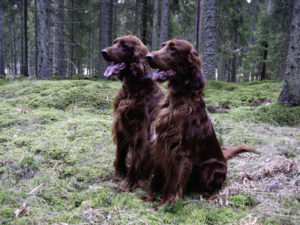
Boykin Spaniel 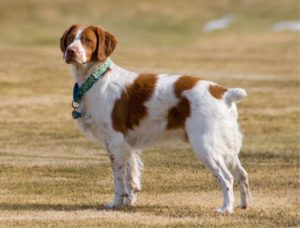
Brittany 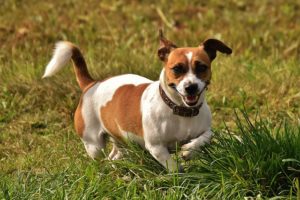
Jack Russell Terrier
- Boykin Spaniel: Boykins originated in South Carolina in the early 20th century. They resulted from a combination of American Water Spaniels, Pointers, and Retrievers. They handle brush and wetland terrain equally well, flushing turkey and duck out of hiding. At home, they’re one of the most loving dogs you’ll find. Good thing, too, because you’ll end up spending A LOT of time combing all of the debris out of their long, flowing coats!
- Brittany: Often mislabeled as a Brittany Spaniel, the Brittany comes from the (you guessed it) Brittany region of France, dating back to the 1800s. They’re actually a combination of a spaniel and a setter, taking both breeds’ best aspects. If you want a little bit of everything from your hunting breed, they’re one of the best. They flush, point, AND retrieve. You need to keep them active and well-exercised, though, or they’ll start getting restless and find something to occupy their time (which you WON’T appreciate).
- Jack Russell Terrier: While one of the smallest hunting breeds, JRTs have the energy and stamina to keep up with the big guys. They’re also on the same level to flush out small game, and no one pursues rabbits quite like these dogs. That boundless enthusiasm and energy can spell trouble at home, though. You’ll want to stay on top of their demands to prevent unwanted problems.
Hunting Breeds: Pointing Dogs
While some game responds well to the flushing technique, others are onto that trick. They’ll remain frozen in place. If they’re sitting in a field, immobile, we may easily miss them. So we developed hunting breeds with keen eyes (and noses) to seek out those sneaky birds. Pointing involves a dog going extremely still, using their nose to indicate the game’s position. A hunter then has a chance to sight and line up their shot. It’s a special skill, as the dog needs to remain frozen in place until the hunter takes notice.
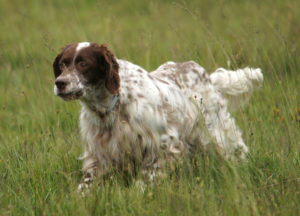
English Setter 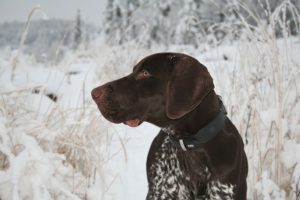
German Shorthaired Pointer
- English Setter: English Setters hold one of the best reputations for pointing dogs. Their compact bodies house powerful muscles that endure over the most uneven terrain. And they’ll stay on point regardless of how close you need to get to line up your shot (something that sets them apart from English Pointers). Unfortunately, they have a mischievous streak. You’ll want to keep their busy little minds engaged to prevent doggie pranks at home. And their thick coats mean plenty of grooming after a hunting trip.
- German Shorthaired Pointer: Most people think of German Shorthaired Pointers when asked for a pointing hunting breed. They’re one of the most athletic and intelligent dog breeds out there. They’ll point within inches of a bird – without disturbing the feathered creature. For hunters looking to hunt chukar, they’re the dog of choice. However, they don’t understand the concept of “downtime.” Unlike some dog breeds, they aren’t interested in snuggling on the couch once the hunt ends. You’ll have to spend time exercising them and keeping their minds active and engaged.
Hunting Breeds: Retrieving Dogs
Birds, especially, take flight once they’re flushed into the open. Once shot, they may fall dozens or even hundreds of feet away from the hunter’s position. And when you’re out in the forest? Who knows what predators may lurk in the shadows, waiting to snatch your prize away? Retrievers have the speed to take off and pick up the fallen game. Most retrievers have water-repellent, insulated coats designed to protect them from chilly waters as they dive in to get waterfowl floating on lakes or ponds. They’re also powerfully muscled for bursts of energy.
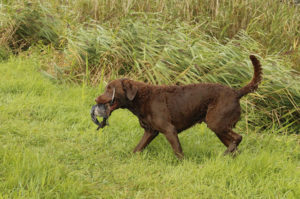
Chesapeake Bay Retriever 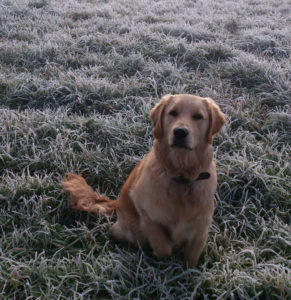
Golden Retriever 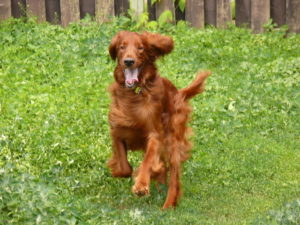
Irish Setter 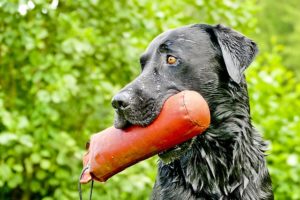
Labrador Retriever
- Chesapeake Bay Retriever: Chessies are one of the hunting breeds completely developed within the United States (hence their name). They have every tool a hunting breed needs to work in and around water: an oily, waterproof coat, webbed feet, and a joy for swimming. Not only do they work well in lakes and ponds, they take their powerful muscles to the ocean and retrieve sea ducks! However, they have a stubborn streak, and training can get difficult. You need a sharp understanding of Chessies before you start training, so you know when your pup’s being a brat and when they’re confused.
- Golden Retriever: Is there anything Golden Retrievers CAN’T do? Probably not. One of the most popular dog breeds in the United States, Goldens excel at bird hunting. Their thick, double coat protects them from chills in the water. And they apply the same intelligence they’re favored for in the service dog realm to hunting. When the hunt’s over, they’re happy as clams to settle in with the family and savor snuggles and attention.
- Irish Setter: Irish Setters trace their hunting lineage back a whopping 200 years! They started as partners for pheasant hunting, and they’ve continued the retrieval process to this day. Boundless energy and clever minds make them the perfect hunting breed, whether you’re in the field or on the marsh. Just make sure you’re prepared to spend hours fixing that long, luxurious coat when you’re done. You’ll also need to keep up with their exercise demands, or you could find yourself with a mischievous (and destructive) pup on your hands.
- Labrador Retriever: Labs follow Goldens close behind in popularity, and that extends to hunting. Retrieving birds was the original job assigned to these athletic, intelligent dogs, and they continue to enjoy the process. With a short, waterproof coat, they aren’t difficult to manage afterward, either. And they adore their families, settling in with children and even cats with ease. If you want an all-around great hunting breed, Labs are the dog for you.
Hunting Breeds: Scenting Dogs
Rabbits, raccoons, and deer leave trails through the forest. And while an adept hunter may recognize a few signs, no human has the olfactory capability to crawl on the ground and follow scent markers. On the other hand, dogs have powerful noses that can capture every tiny particle of smell an animal leaves behind. Scent dogs can decide which markers are too old and which remain fresh and bright. They move through the brush and undergrowth, undeterred. And they bay or howl, so their hunting partner knows exactly where to find them. (After all, four legs move faster than two!)
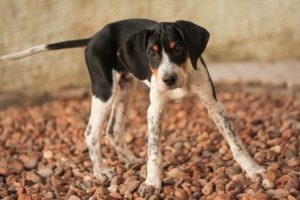
American Foxhound 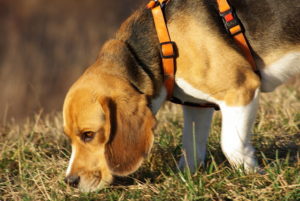
Beagle 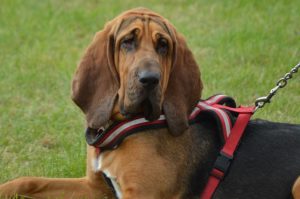
Bloodhound 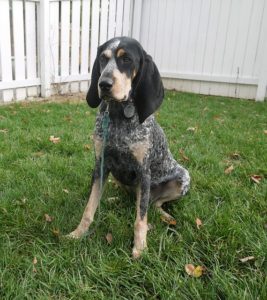
Coonhound
- American Foxhound: American Foxhounds got their start in Maryland and Virginia. Their original job was (you’ll never guess) hunting foxes. While sometimes confused with Beagles, they have longer legs – designed to run down fox and deer over vast distances. This hunting breed LOVES running, and they don’t tree their quarry. They live for the chase, and they have a deep bay to keep the hunter attuned to their position. With a deep loyalty streak, they also make excellent family dogs. And that short coat’s easy to brush out after that headlong dash through the brush.
- Beagle: When it comes to hound dogs, Beagles top the list. Originally bred for hunting rabbits, foxes, and small birds over 200 years ago, most hunters use these cheery pups to track down rabbits these days. This hunting breed comes in second when it comes to the best nose (the Bloodhound has the honor of the top spot), and that distinct Beagle bay? You’ll never lose track of your pup, no matter where they range. Their enthusiasm and positive outlook make them popular in the home, too, and they train fairly easily.
- Bloodhound: Bloodhounds got their start as scent hounds tracking big game: deer and wild boar. When people realized how powerful their scent skills were, they started using them for additional tracking. These hunting dogs remain calm and devoted to their trails, regardless of what they’re searching for. As such, they don’t see much sporting work these days. Instead, Bloodhounds work more as search and rescue dogs. However, if you want a determined and excellent hunting breed, you can’t go wrong with one of these sleuths.
- Coonhound: Coonhounds come in several varieties: American English, Bluetick, Black and Tan, Redbone, and Treeing Walker. Each hunter tends toward their particular favorite, but all Coonhounds share the same determination and intelligence. They have incredible endurance, and they’ll pursue their target for miles without stopping. And that deep bass howl? You can’t miss it. Unhappily, they’re one of the more reckless hunting breeds – plunging straight through brambles without a second thought. They have a tough outer coat to protect them, but you need to expect to clean up some scrapes.
Hunting Breeds: Sneaking
Large game hunting isn’t as popular these days. Bear and moose present A LOT of hazards to everyone involved in the hunt. Hunting breeds that accompanied men looking for these massive animals need the ability to remain still, quiet, and stealthy. Not to mention a sturdy demeanor to confront something three times larger than you! Amazingly enough, you’ll find dogs that have those sneaky qualities and the steady mind to handle a roaring mouth full of razor teeth!
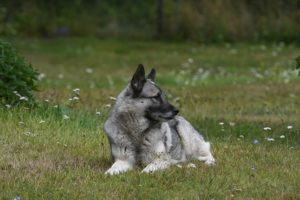
Norwegian Elkhound 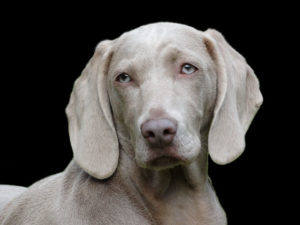
Weimaraner
- Norwegian Elkhound: When Vikings were setting out to conquer the known world, they had Norwegian Elkhounds at their sides. While considered medium-sized dogs, Elkhounds have the determination, endurance, and intelligence to take on moose, bear, and (obviously) elk. This hunting breed tracked their quarry over mountain terrain, then kept the massive animals at bay until the hunting party arrived. The thick double coat offered protection against wintry conditions, as well as serving as a shock absorber against hooves or claws. Even today, some hunters use Elkhounds to go after moose!
- Weimaraner: People consider Weimaraners goofy or whiney dogs. But these German dogs got their start hunting large game – including bear and wolves. Their long, athletic legs allow them to cover a lot of ground to pursue their quarry, and they move FAST. Just as agile is their thinking, allowing them to out-think the clever animals they’re tracking. Of course, they also form loyal bonds with their people, making them ideal family dogs. And that smooth coat doesn’t require a lot of care or work. You WILL need to put in hours on training, though. (Intelligence sometimes backfires against you)
Tally Ho!
Nowadays, hunting falls into a category of things people participate in for sport. It doesn’t lessen the bond between the hunter and their faithful canine companion, though. Hunting breeds continue to exercise the skills they developed hundreds of years ago. And each dog brings a specific set of skills into the field. You have to sit back and marvel at these pups’ prowess.
So the next time you watch your pooch dash after that tennis ball or frisbee, ask yourself where the retrieval instinct comes from. Who knows – your kiddo may have a little hunting instinct in there!

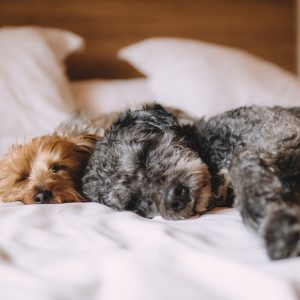
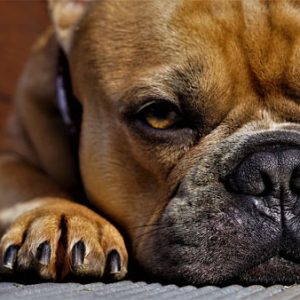
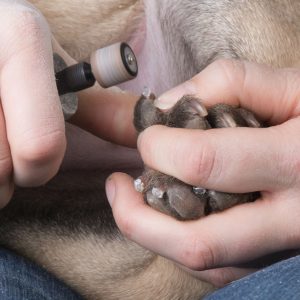
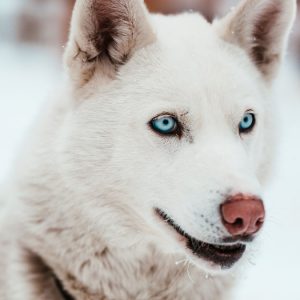
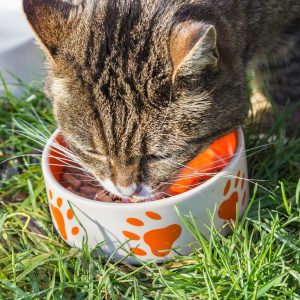
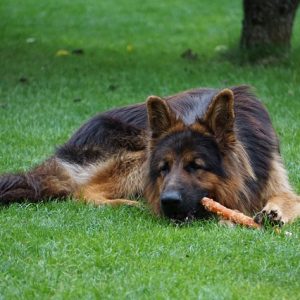
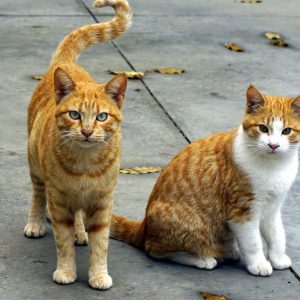
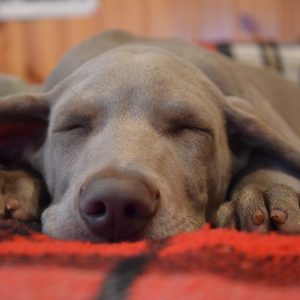
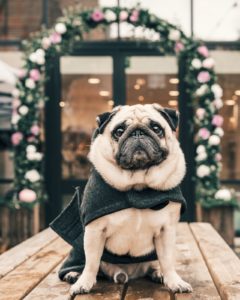
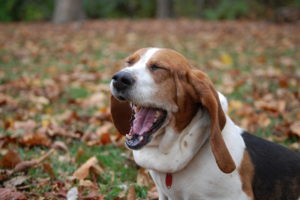

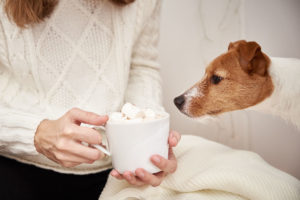
No comment yet, add your voice below!